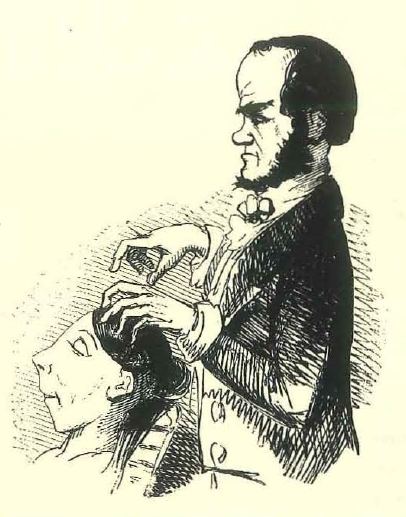 | ||
Hypnosurgery is the term given to an operation where the patient is sedated using hypnotherapy rather than traditional anaesthetics. Hypnosis for anaesthesia has been used since the 1840s where it was pioneered by the surgeon James Braid. During hypnosurgery, the hypnotherapist helps patients control their subconscious reflexes so that they do not feel pain in the traditional sense. Patients are aware of sensation as the operation progresses, and often describe a tingling or tickling sensation when pain would normally be expected. Hypnosis is used in surgery for pain management, to control spasms in the alimentary canal, during rehabilitation and as anaesthesia during an operation.
Contents
- Hypnosis and mesmerism
- Documented cases
- First Official Hypno Anaesthetist
- Preparing the patient for hypnosurgery
- Post operative hypnosis
- References
Hypnosedation, a combination regimen of hypnosis, local injection of analgesics and mild sedation, is more frequently used. The patients — mostly aged or other persons that run an increased risk under general anesthesia — are mildly sedated and brought into a state of increased alertness by having them listen to a story in the operation theatre. Anesthesiologists at the University of Liège in Belgium have performed over 4800 surgical interventions, mainly in ENT and thyroid treatments, over the past 10 years.
Hypnosis and mesmerism
Mesmerism, also called animal magnetism, is the term given by Frank Mesmer for what he believed to be an invisible natural force in animals. He also believed that it could have physical effects such as healing.
James Braid who is credited for pioneering hypnosurgery, first observed mesmerism while he was attending a public performance on magnetism by Charles Lafontaine. After attending two more shows he came to the conclusion that although there were observable physical effects, it was not caused by any magnetic interference. Braid then used self-experiment to prove his idea that mesmerism was achieved by vision and concentration of the subject. Braid therefore proved that the phenomena demonstrated by Lafontaine had nothing to do with magnetism. James Braid then adopted the term “hypnotism” to prevent his work from being confounded with mesmerism.
Documented cases
The first documented case of hypnosis as an anesthetic in surgery was when Dr. Jules Cloquet (1790-1883), a French surgeon, operated on a woman's breast while she was under the influence of hypnosis. The operation was for the removal of a tumor. Over the course of his career, he performed several successful surgeries using hypnosis as the only form of anesthesia.
While stationed at the River Valley Road prisoner of war hospital in Singapore in 1945, with the supplies of chemical anæsthetics severely restricted by the Japanese, Michael Woodruff and a medical/dental colleague from the Royal Netherlands Forces successfully used hypnotism as the sole means of anæsthesia for a wide range of dental and surgical procedures.
First Official Hypno-Anaesthetist
The first hypno-anaesthetist was Dr. James Esdaile, a Scottish surgeon. He performed over 300 operations between 1845 and 1851 in India. He was also responsible for the creation of the Hooghly hospital near Calcutta, India. Although Dr. Esdaile was providing life-saving care, he also took advantage of his social position to prove that European medical techniques were superior to Eastern medicine and held the view that his patients were inferior.
Preparing the patient for hypnosurgery
At the present time, preparing a patient for hypnosurgery would include having several 50–60 minutes’ sessions of hypnotherapy done by a hypnotherapist. Each individual session focuses on controlling the pain and relaxing the mind. The number of hypnotherapy sessions varies according to the patient and their susceptibility to hypnosis. Generally, the patient would be ready for hypnosurgery after 6 weeks of training.
Post-operative hypnosis
Hypnosis may also be helpful post-surgery in helping to facilitate faster healing in patients, with one study reporting faster tissue healing in patients who use hypnosis during surgical recovery. Several other studies have shown a psychological link with healing and recovery. In a study of patients up to seven weeks after undergoing a surgical procedure, researchers found greater healing and improvement in patients who had used hypnosis over those who only received supportive attention or standard "standard postoperative care".
